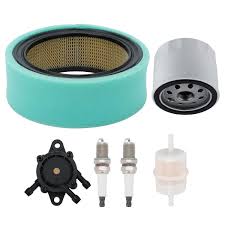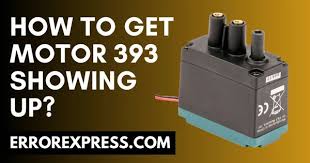Have you ever encountered issues with your Motor 393 not showing up as expected? Whether you’re a hobbyist or a professional dealing with robotics or machinery, ensuring your Motor 393 is operational is crucial for seamless performance. This article delves into effective strategies to troubleshoot and optimize the visibility of Motor 393 units, ensuring they function reliably when integrated into your projects.
Introduction
Understanding the nuances of Motor 393 visibility is essential for anyone relying on these motors. From robotics enthusiasts crafting intricate designs to industrial settings requiring precise machinery control, the reliability of Motor 393 can significantly impact project outcomes.
Understanding Motor 393
Motor 393 is a robust DC motor commonly used in various applications such as robotics, automated systems, and automotive mechanisms. Its versatility and durability make it a preferred choice among engineers and hobbyists alike.

Diagnosing Motor 393 Issues
Before diving into complex troubleshooting, perform initial checks to identify common issues affecting Motor 393 functionality. Ensure all connections are secure, inspect the power supply for inconsistencies, and verify proper grounding to prevent electrical faults.
Checking Connections
Loose or faulty connections are often the culprit behind Motor 393 malfunctions. Ensure all wires and terminals are securely connected to avoid intermittent or total loss of power.
Testing Power Supply
A stable power supply is crucial for Motor 393 operation. Test voltage levels to ensure they meet manufacturer specifications, as inadequate power can lead to motor failure or erratic behavior.
Ensuring Proper Grounding
Proper grounding minimizes electrical noise and interference, crucial for maintaining Motor 393 performance integrity. Verify grounding connections to mitigate potential operational disruptions.
Steps to Ensure Motor 393 is Operational
Calibration plays a pivotal role in optimizing Motor 393 performance. Follow manufacturer guidelines to calibrate the motor accurately, ensuring it operates at peak efficiency within your specific application.
Calibration Process
Calibration involves setting motor parameters such as speed and torque to match operational requirements. Utilize calibration tools and software provided by the manufacturer for precise adjustment.
Programming Tips
Customize motor settings through programming to fine-tune performance characteristics. Understanding programming languages compatible with Motor 393 controllers enhances flexibility in integrating these motors into diverse projects.
Advanced Troubleshooting Techniques
For persistent issues, advanced troubleshooting may be necessary. Utilize diagnostic tools such as multimeters or oscilloscopes to pinpoint underlying problems affecting Motor 393 functionality. If issues persist, seek guidance from technical support or online communities specializing in motor control systems.
Using Diagnostic Tools
Diagnostic tools provide real-time data on motor performance metrics, aiding in the rapid identification of faults or inefficiencies. Analyze data outputs to implement targeted corrective actions effectively.
Consulting Technical Support
Manufacturers often provide technical support resources for troubleshooting complex motor issues. Engage with knowledgeable support personnel to resolve persistent Motor 393 challenges promptly.
Preventive Maintenance for Motor 393
Regular maintenance prolongs Motor 393 lifespan and ensures continuous operation without unexpected downtime. Implement preventive measures to uphold motor reliability and performance consistency.
Regular Inspections
Schedule routine inspections to check for wear and tear, loose components, or signs of impending failure. Addressing minor issues early prevents costly repairs or replacements down the line.
Cleaning and Lubrication
Ensure that the Motor 393 components are kept clean and properly lubricated to reduce friction and prevent excessive heat buildup. Use manufacturer-recommended lubricants and cleaning methods to maintain optimal operational conditions.

Common Motor 393 FAQs
1. What should I do if my Motor 393 doesn’t power on?
- Check power connections and ensure the motor is receiving adequate voltage.
- Verify fuse integrity and inspect for any blown fuses that may require replacement.
2. How often should I recalibrate Motor 393?
- Recalibrate Motor 393 whenever you notice performance deviations or after significant operational changes.
- Follow manufacturer guidelines for specific recalibration intervals based on usage and environmental factors.
3. Why is my Motor 393 overheating?
- Overheating may result from prolonged operation at high loads or insufficient cooling.
- Improve ventilation around the motor and reduce operating loads to mitigate overheating risks.
Conclusion
Ensuring Motor 393 visibility and functionality is crucial for maximizing performance in various applications. By understanding common issues, implementing effective troubleshooting techniques, and maintaining regular upkeep, you can optimize Motor 393 reliability and longevity. Invest time in preventive measures to minimize downtime and enhance operational efficiency across your projects.










